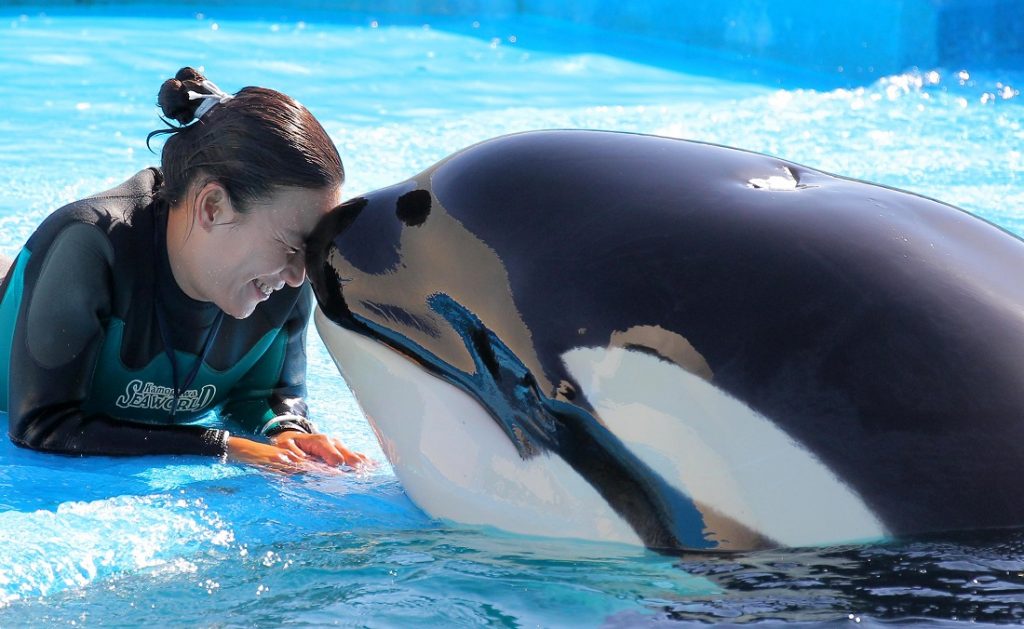SeaWorld Tragedy: The Final Moments of Dawn Brancheau’s Life
On February 24, 2010, SeaWorld Orlando became the epicenter of a tragedy that would reverberate through the world of marine entertainment. Dawn Brancheau, a 40-year-old veteran trainer and SeaWorld’s “poster girl,” was killed by Tilikum, a 12,000-pound orca, during a “Dine with Shamu” show, in front of a horrified audience. The incident, marked by its sudden violence and profound loss, sparked global debates about the ethics of keeping orcas in captivity and the risks faced by trainers. What unfolded in those final seconds, and what led to this devastating event?
Dawn Brancheau was no novice. With 15 years at SeaWorld, she was a seasoned professional, deeply passionate about marine animals. Born in Cedar Lake, Indiana, she graduated from the University of South Carolina with degrees in psychology and animal behavior, driven by a childhood dream to work with orcas after a family visit to SeaWorld. Known for her fearlessness and dedication, she played a key role in revamping the Shamu show and was featured on billboards across Orlando. Away from work, she volunteered at animal shelters and cared for a menagerie of pets, reflecting her lifelong commitment to animals.

The “Dine with Shamu” show was a popular attraction where guests enjoyed meals poolside while watching trainers interact with orcas. On that fateful day, Brancheau was performing a routine with Tilikum, SeaWorld’s largest orca, estimated to be 36 years old and captured off Iceland in 1983. Tilikum had a troubled history, having been involved in two prior human deaths: a trainer at Sealand of the Pacific in 1991 and a man who snuck into his tank at SeaWorld in 1999. Despite this, he remained a star performer and sired 14 calves, though concerns lingered about his aggressive traits.
Moments before the attack, Brancheau was at the pool’s edge, lying on a slide-out platform, rubbing Tilikum’s head as part of the show’s closing routine. Eyewitness accounts and SeaWorld’s official statement diverge on what happened next. Some witnesses claimed Tilikum grabbed Brancheau by her shoulder or arm, while the park stated she was pulled into the water by her hair, possibly her ponytail. Video footage, later highlighted in the 2013 documentary Blackfish, captured the horrifying moment when Tilikum dragged her underwater. For 45 minutes, he thrashed her, preventing rescue attempts by trainers and staff as the audience watched in shock. The autopsy revealed Brancheau died from drowning and blunt force trauma, with severe injuries including a scalped head and a severed arm.

Why did Tilikum attack? Theories range from stress-induced aggression to the unnatural conditions of captivity. Orcas in the wild are highly social, intelligent creatures that roam vast oceans, living in complex family groups. In captivity, they face confined tanks—described by critics as “bathtubs” for their size—leading to boredom, frustration, and health issues like collapsed dorsal fins and severe dental damage from chewing on enclosure walls. Tilikum’s life in captivity, spanning over 30 years, likely exacerbated these stresses. Blackfish argued that such conditions can turn orcas unpredictable, noting that wild orcas rarely harm humans, while captive ones have been linked to four deaths, three involving Tilikum.
The Occupational Safety and Health Administration (OSHA) investigated, fining SeaWorld $75,000 for safety violations, including exposing trainers to drowning and struck-by hazards. A 2011 lawsuit reduced the fine to $12,000, but OSHA’s findings were damning: SeaWorld’s reliance on operant conditioning failed to eliminate the “element of unpredictability” in working with orcas. New safety rules banned trainers from water performances, and by 2016, SeaWorld ended its orca breeding program and theatrical shows, partly due to public backlash fueled by Blackfish. Attendance and stock prices plummeted post-documentary, reflecting shifting public sentiment.

Brancheau’s death was not an isolated incident. In 2006, trainer Ken Peters was dragged underwater by an orca named Kasatka at SeaWorld San Diego, surviving a nine-minute ordeal. In September 2024, another trainer was injured by an orca during a training exercise at SeaWorld Orlando, leading to a $16,550 OSHA fine for inadequate safety measures. These incidents underscore the inherent risks of close-contact orca interactions, even with experienced trainers.
Brancheau’s family, while acknowledging Blackfish’s role in raising animal welfare awareness, emphasized that the film did not fully capture Dawn’s story, feeling her death was overshadowed by the focus on orcas. Her widower, Scott, chose not to pursue legal action against SeaWorld. The tragedy prompted a national conversation, with animal rights activists arguing that orcas’ intelligence and social needs make captivity unethical. Posts on X reflect ongoing public outrage, with users decrying the “zoindustrial complex” and calling for an end to orca captivity.
In those final seconds, as Brancheau connected with Tilikum, the fragility of human-orca interactions was laid bare. Her death, a collision of human ambition and animal instinct, remains a haunting reminder of the costs of captivity—for both the creatures and those who dedicate their lives to them.





